Growing your own cashew nut tree may sound like a tropical farmer’s dream, but what if you could cultivate this nut-bearing beauty right at home—even in a pot? Cashew trees, known for their delicious nuts and vibrant red or yellow fruits (called cashew apples), can thrive surprisingly well in containers with the right care and attention. This guide will walk you through everything you need to know to grow cashew nut trees in pots easily and enjoy a rewarding harvest right on your balcony, terrace, or backyard.
1. Introduction to Cashew Trees
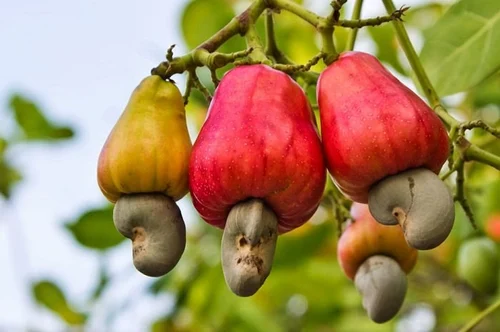
The cashew tree (Anacardium occidentale) is a tropical evergreen native to Brazil but widely grown in India, Vietnam, and many parts of Africa. This tree is not only valued for its nuts but also for the juicy cashew apple and even its wood.
In its natural environment, the cashew tree can grow up to 12 meters tall. However, with proper pruning and care, it can be successfully maintained as a compact container plant reaching about 1.5–2 meters—perfect for limited spaces.
2. Why Grow Cashew Trees in Pots?
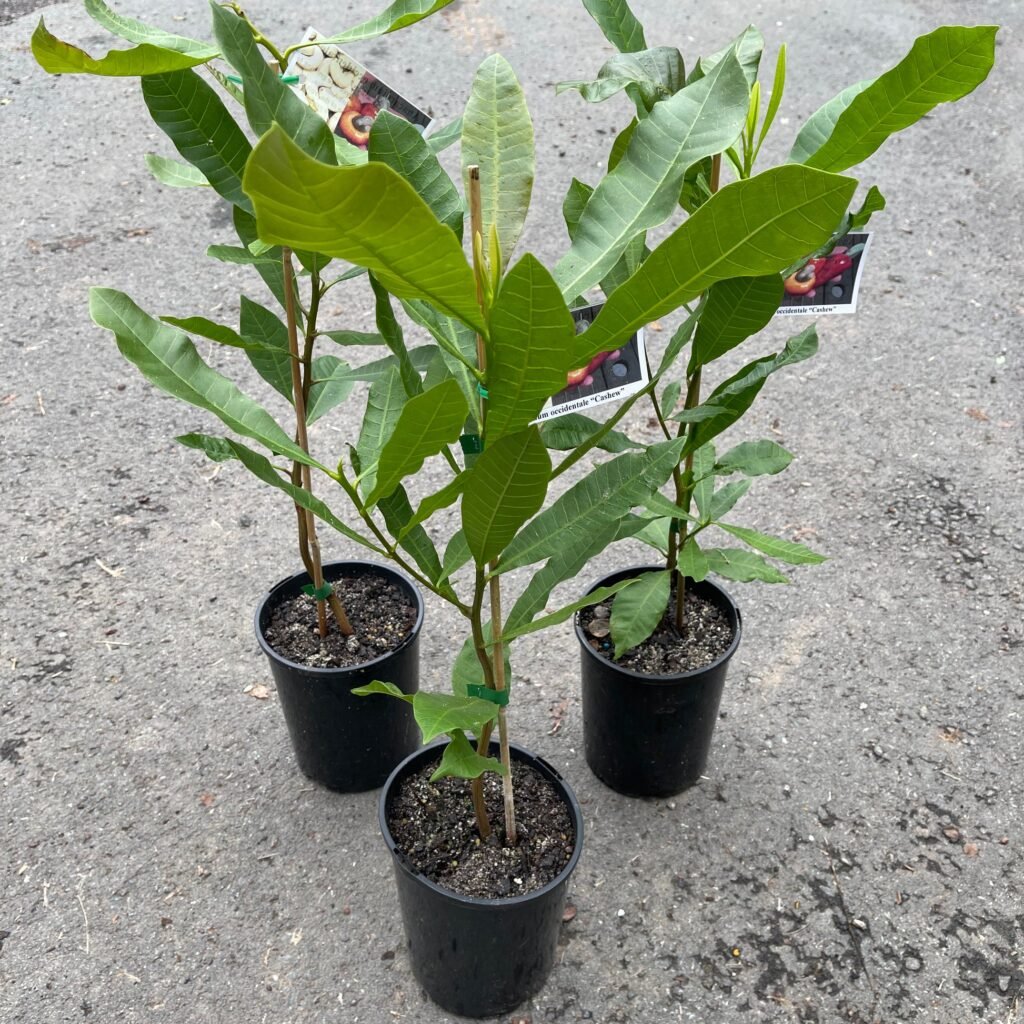
Container gardening has become increasingly popular for fruit trees, and cashew trees are no exception. Here’s why growing them in pots is a great idea:
- Space-saving: Ideal for urban gardeners with limited yard space.
- Easy to manage: Easier to control soil quality, water levels, and sunlight.
- Pest management: Containers allow you to isolate plants from ground pests and diseases.
- Mobility: You can move the pot to protect the tree from extreme weather or provide better sunlight exposure.
- Quick maintenance: Pruning, fertilizing, and watering are simpler in a controlled container setup.
3. Choosing the Right Variety for Containers
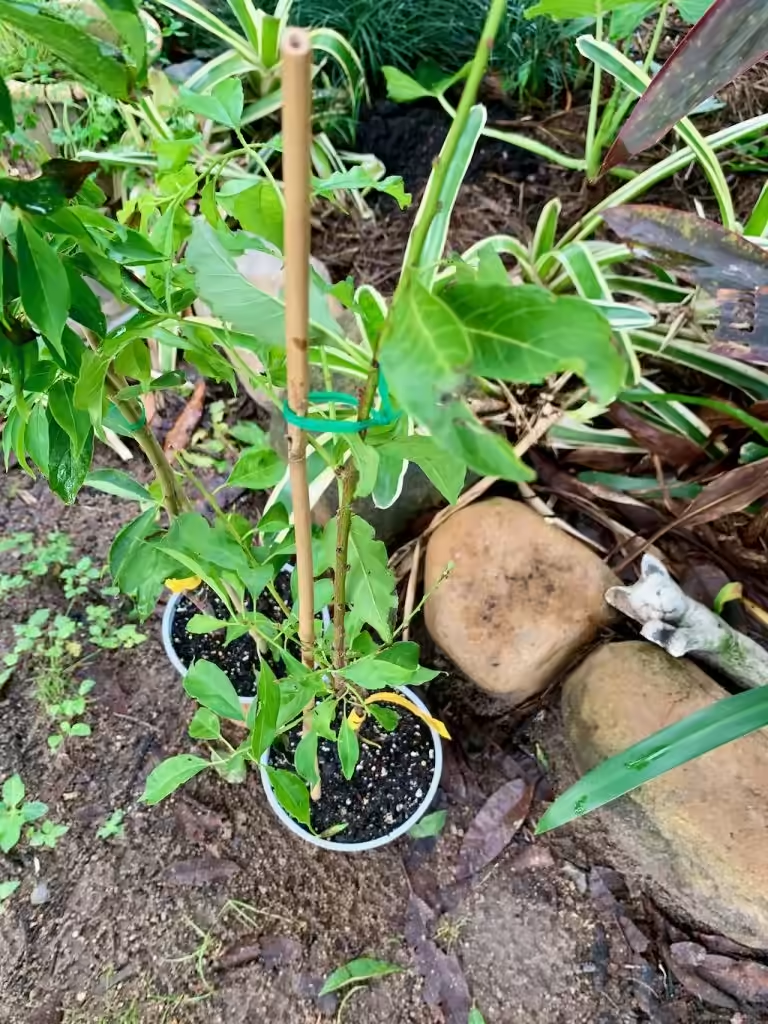
Not all cashew varieties are suited for pot cultivation. For container growing, choose dwarf or grafted varieties, which remain compact and start fruiting earlier—typically within 2–3 years.
Some popular dwarf varieties include:
- Vengurla-4 and Vengurla-7 (India): Compact, high-yielding, and disease-resistant.
- Bhaskara: A dwarf hybrid variety suitable for pot culture.
- Local grafted seedlings: Often available from nurseries and adaptable to container growing.
4. Selecting the Perfect Pot
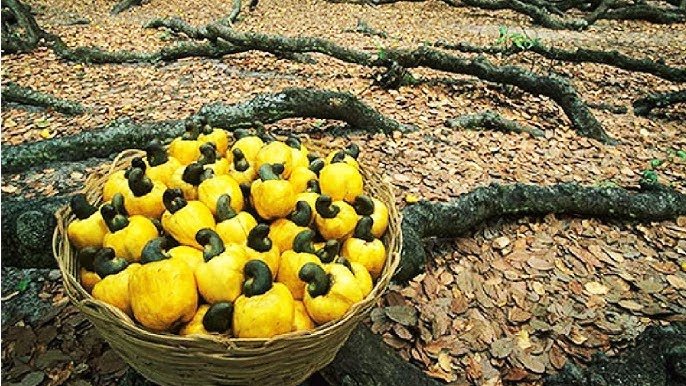
Cashew trees need enough root space to thrive. Choose a pot that:
- Has a minimum capacity of 50–70 liters (15–20 gallons).
- Is wide and deep (at least 20 inches deep and 20 inches across).
- Is made of terracotta or plastic with good drainage holes to prevent waterlogging.
For long-term growth, you can gradually transfer the sapling to larger pots as it matures. Ensure each container upgrade provides adequate space for root expansion.
5. Ideal Soil Mix for Cashew Trees
Cashew trees love well-drained, sandy or loamy soil that allows air circulation and prevents root rot. Heavy clay soils are unsuitable for containers.
Recommended soil mix:
- 40% garden soil
- 30% coarse sand or perlite (for drainage)
- 20% organic compost or cow dung manure
- 10% cocopeat or leaf mold (for moisture retention)
Add a handful of neem cake powder or bone meal to enrich the soil with natural nutrients and prevent fungal infections.
6. Propagation: Growing Cashew from Seed or Grafting
You can grow cashew trees either from seeds or grafted saplings.
From Seeds:
- Collect fresh cashew nuts (not roasted) from a ripe cashew apple.
- Dry the nuts in shade for 2–3 days.
- Soak them in warm water for 24 hours to speed up germination.
- Plant each nut 1 inch deep in a small pot with a light soil mix.
- Keep the soil moist and place the pot in a sunny spot.
- Germination takes around 2–4 weeks.
Once the seedling reaches about 8–10 inches tall, it can be transplanted into a larger pot.
From Grafted Saplings:
If you want faster fruiting, choose a grafted cashew sapling from a nursery. These plants typically begin bearing fruit within 2 years, compared to 5 years from seeds.
7. Sunlight and Temperature Needs

Cashew trees are tropical by nature and require plenty of sunlight to flourish.
- Sunlight: At least 6–8 hours of direct sunlight daily.
- Temperature: They grow best between 25°C and 35°C (77°F–95°F).
- Humidity: Moderate humidity is ideal; avoid excessively wet or dry air.
If you live in a cooler region, place your cashew tree near a sunny window or on a balcony protected from cold winds. In winter, move the pot indoors or use a greenhouse setup.
8. Watering and Drainage
Cashew trees are drought-tolerant once established, but young plants need consistent moisture.
- Water regularly: Keep the soil slightly moist, not soggy.
- Avoid overwatering: Waterlogging can lead to root rot.
- Mulch: Add a 1-inch layer of organic mulch like straw or dry leaves on top to retain moisture.
During the flowering and fruiting stages, water moderately—too much or too little can affect fruit set and nut development.
9. Fertilizing Your Cashew Tree
Container plants rely heavily on fertilization, as nutrients are washed away with watering. Feed your cashew tree regularly to encourage strong growth and high yields.
Fertilizer schedule:
- During growing season (spring–summer): Apply a balanced NPK (10:10:10) fertilizer every 3–4 weeks.
- Before flowering: Add potassium-rich fertilizer (e.g., banana peel compost) to boost flowering and fruit formation.
- Organic options: Use compost tea, cow dung manure, or vermicompost every 2–3 months.
Avoid excessive nitrogen—it promotes leafy growth at the expense of nuts.
10. Pruning and Maintenance
Pruning helps shape your cashew tree and promotes air circulation.
- Pinch off the growing tips when the plant is young to encourage branching.
- Remove dead or crossing branches regularly.
- After harvest, lightly prune the plant to maintain its size and shape.
Regular pruning keeps your potted cashew tree compact, healthy, and aesthetically pleasing.
11. Pests and Diseases
Cashew trees are generally hardy but can occasionally face pest problems such as:
- Aphids, mealybugs, and scales: Spray with neem oil solution every 15 days.
- Fungal infections (powdery mildew, anthracnose): Avoid overhead watering and use copper-based fungicide if necessary.
Ensure proper airflow and sunlight to minimize pest infestations.
12. Flowering and Fruiting
Cashew trees start flowering after 2–3 years (grafted plants) or 4–5 years (seed-grown). The flowers are small, pale yellow or pinkish, and appear in clusters.
Once pollinated, the cashew apple and nut start developing. The nut grows at the end of the apple, which is edible but highly perishable.
Harvesting tips:
- Fruits are ready to pick when the cashew apples turn red or yellow.
- Detach the nut and apple carefully.
- Dry the nuts under sunlight for 2–3 days before roasting or storing.
One healthy tree can yield 10–20 kg of raw nuts per year in ideal conditions.
13. Harvesting and Processing Cashew Nuts
After harvesting, the nuts need proper curing and shelling:
- Dry the nuts under sunlight for several days until the shells harden.
- Roast or steam them carefully to loosen the outer shell. (Use caution—cashew shells contain caustic oil).
- Once roasted, crack the shells to extract the kernels.
- Dry the kernels again before storing or roasting them for eating.
This process ensures the nuts are safe, tasty, and long-lasting.
14. Benefits of Growing Cashew in Pots
- Fresh, chemical-free nuts right from your home garden.
- Eco-friendly and rewarding hobby for all gardening lovers.
- Compact tree with decorative appeal—cashew trees look stunning when fruiting.
- Educational and fun for children and families to learn sustainable gardening.
15. Final Thoughts
Growing a cashew nut tree in a pot is not only possible—it’s surprisingly easy with a little care and patience. By choosing the right variety, soil mix, and container, and providing adequate sunlight and nutrients, you can enjoy lush green foliage, beautiful blossoms, and eventually a delicious harvest of homegrown cashew nuts.
Whether you have a spacious terrace or a small balcony, your potted cashew tree can thrive and reward you with nature’s gold—fresh cashews and sweet cashew apples—making your garden a tropical delight.

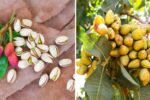
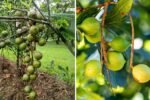
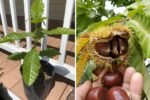
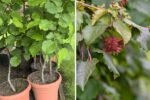

Leave A Comment